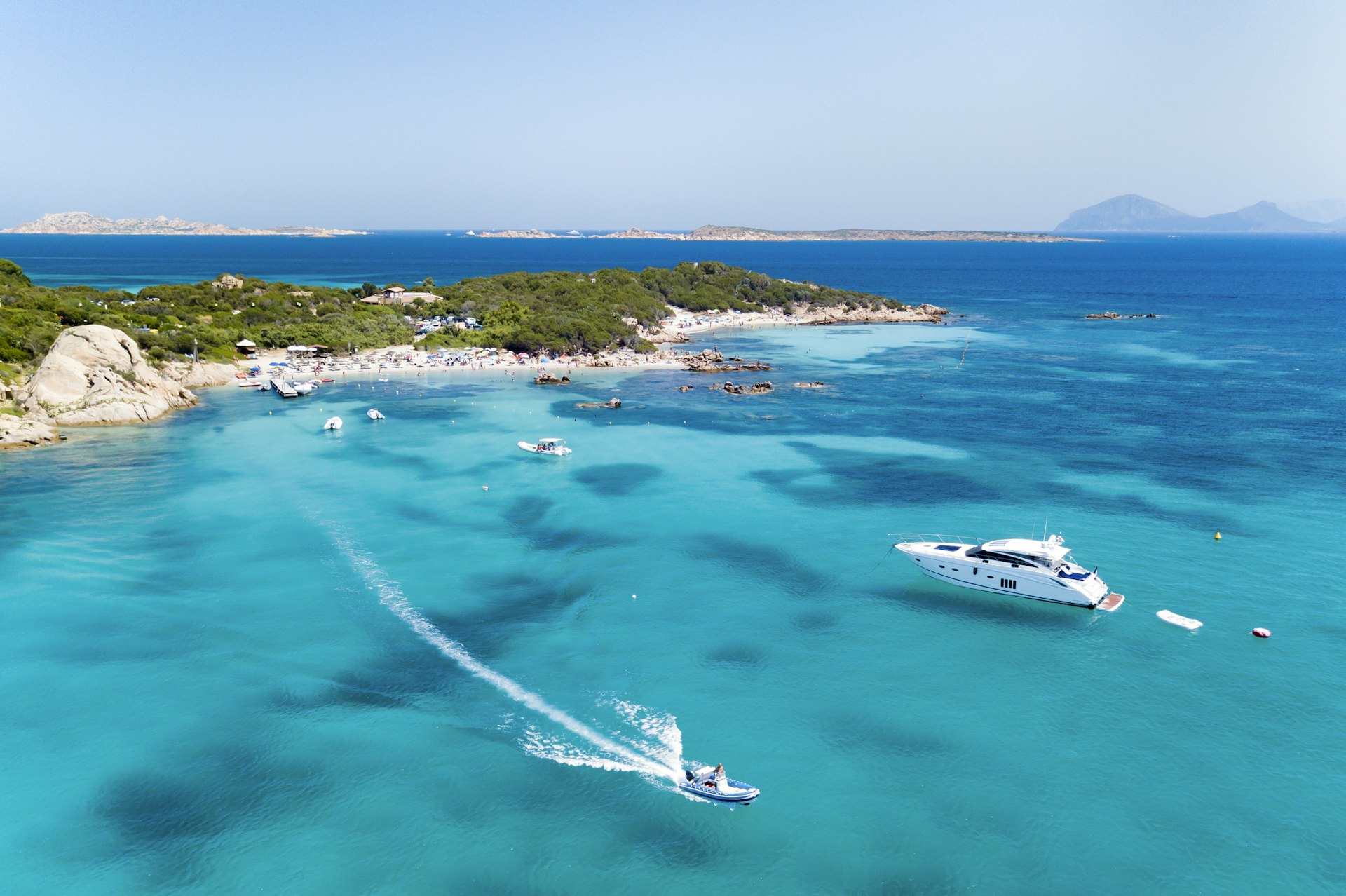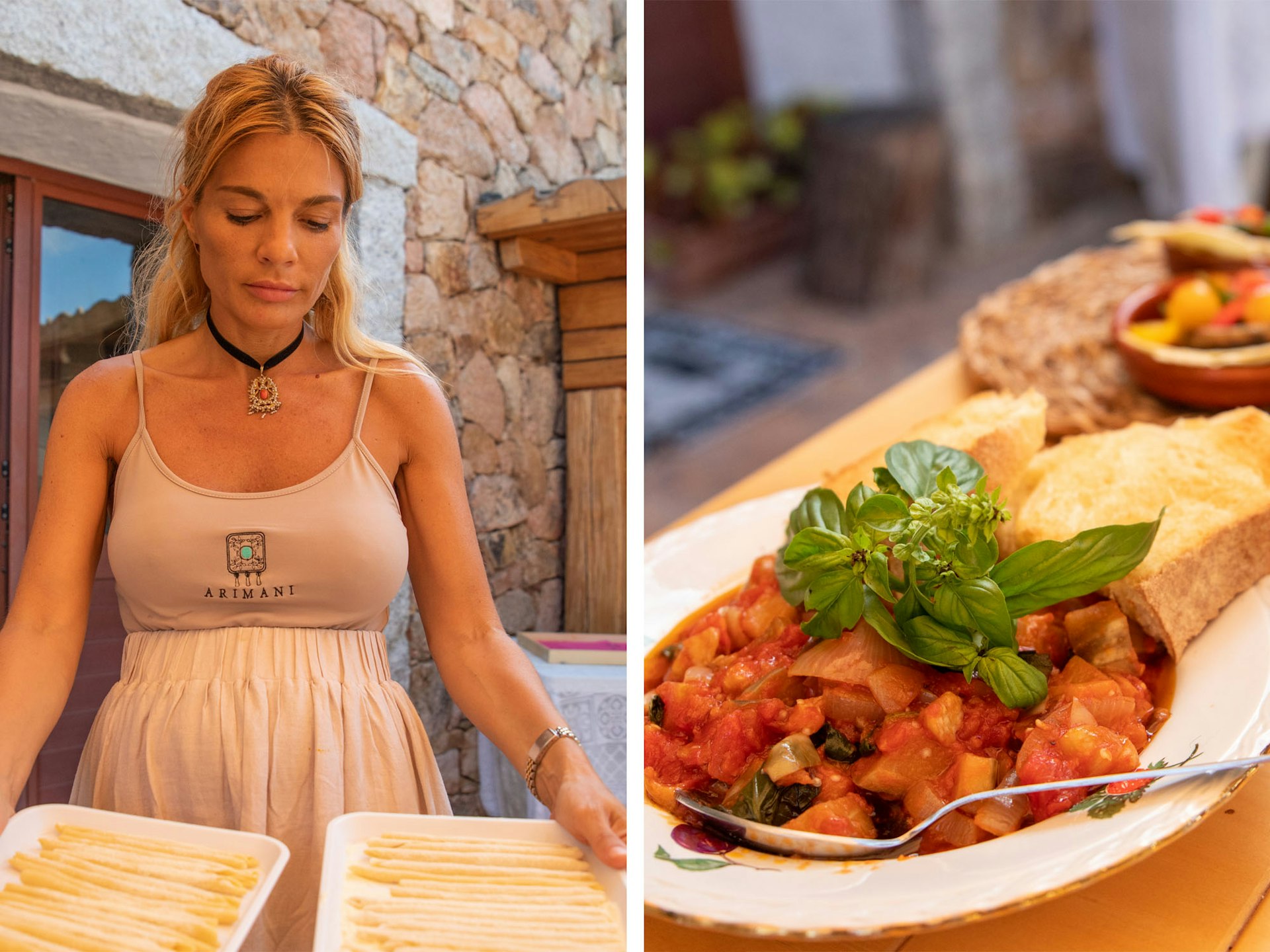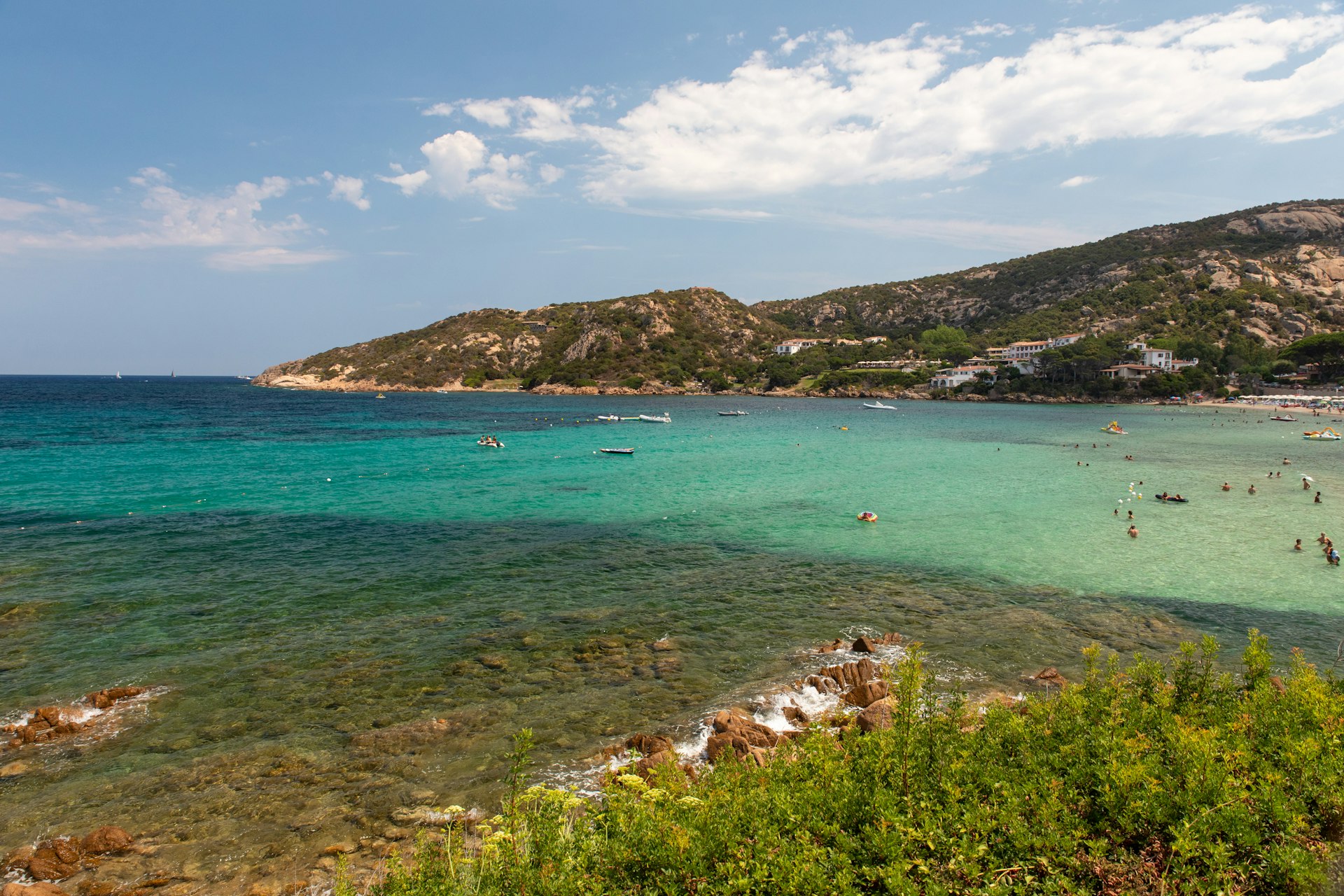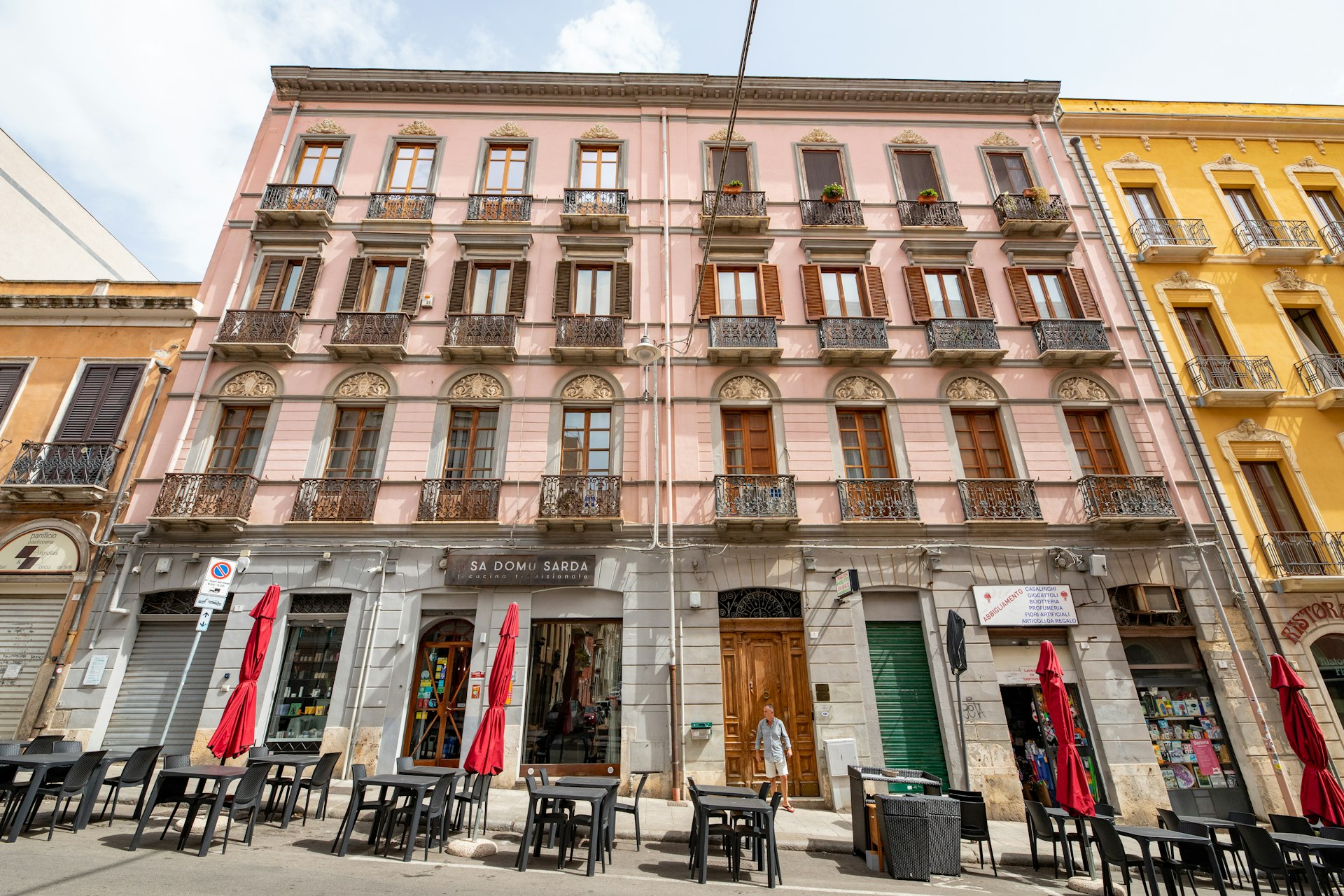Sardinia is known for its cuisine and the longevity of its people. But it also has one of the highest rates of type one diabetes in the world.
To you, the table at Somu looks like this: the amuse-bouches arrive as perfect as a baby’s toes; the oyster is so precisely presented it could have been painted by Mondrian; a glass of Sardinian vermentino gently perspires in the warmth of the afternoon.
To me, the table looks the same, but it also represents a puzzle. I am a type one diabetic and need to inject myself with insulin to cope with the sugar and carbohydrates in the dishes in front of me, as well as those still to come. The oyster and mercifully the wine will be negligible, the mysterious snacks may nudge my blood sugar skywards, but then the bread arrives arrayed temptingly in a basket, plus an irresistible mini-loaf on a plinth of its own. It’ll be the bread that gets me. It’s always the bread. I take eight units of fast-acting insulin and hope for the best.
Ordinarily, I’d hide my injection in a restaurant – especially one as plush as Somu. Once, in Los Angeles, a waitress looked astonished when she saw me spiking up, then apologized for interrupting what she thought should have been a private act. Unlike in many places around the world, however, there’s no need to hide my condition in Sardinia.
To health…and prosperity
This Italian island is second only to Finland when it comes to global rates of type one diabetes. Other autoimmune conditions are rife, too. For a place that looks idyllic – sun-splashed and seeming to embody all that is glorious about the Mediterranean – Sardinia has some astonishing health problems. And yet it is also one of the world’s rare Blue Zones, meaning its residents are more likely to live to 100 than in other, similar regions.
These strange contradictions don’t feel particularly pressing as the Somu servers dance out plate after plate of beautiful, Michelin-starred food inspired by the island’s traditional cuisine. “Sardinia is too important to me,” head chef Salvatore Camedda tells me after lunch. He wants me to understand his love for his homeland. “The big difference between us and mainland Italy is that all our food has an influence of the sea. There’s art, and true elegance in our produce. Nowhere else in Italy do you find our real – really genuine – taste.”

Traveling east into the wider Costa Smeralda region, there are few notions of illness or hardship. That evening in Porto Cervo, I take a seat in Lucina, a clifftop restaurant with hallucinatory views out across the bay. This northeastern corner of Sardinia is a living gallery dedicated to contentment, success and wealth, a place where it feels a touch unseemly to arrive in anything other than a yacht. Below the restaurant, the marina is filled with millionaires and billionaires sporting white trousers and tans the color of roasted hazelnuts. On their arms, they wear heavy watches and stupendously glamorous companions enjoying their invincible years before sun damage and the surgeon come for them, too.
The fortunes here – financial and existential – are flabbergasting, and it’s easy to believe that the only faulty pancreases in this part of Sardinia are the result of type two diabetes, the variation that can come from indulgence and age, when the organ is finally exhausted much in the same way the livers of alcoholics can be.

Type one is different in that it is the immune system that has turned against the pancreas. There’s a working theory that the rates are so high in Sardinia because the population had for generations lived with malaria. At the end of the Second World War, an eradication initiative originally conceived by Mussolini was completed by the Rockefellers, and the disease was successfully eliminated. Yet just a few years later, Sardinians’ immune systems were spoiling for a fight and so turned inward. As Moises Velasquez-Manoff writes in his book, An Epidemic of Absence: ‘Those who were resistant to the parasite survived; those who weren’t died… but the highly specialized Sardinian immune system functions properly only in the context of the invader it evolved to thwart.’
Nonetheless, to walk around the beaches on the Costa Smeralda, the epidemic is invisible unless you know what to look for. I notice one little boy with a patch on his arm, his continuous blood sugar monitor. Later, a local man spots my own and nods knowingly, then glances with disapproval at the precipitous mound of gelato in front of me. In a restaurant in Cagliari, I spot a couple on a date. Both have the little tell-tale disks, too, and it takes everything in me not to look up the Italian for: “I’m one of you!”
Carbohydrate complexities
Inland at the Cascioni Eco Retreat, I talk to chef Fabio Vacca. He’s aware that his fellow Sardinians started to get sicker after malaria disappeared. “I’ve heard about people who developed allergies to broad beans and peas, and everyone who got it used to be immune to malaria,” he says before the dinner service starts.
For his part, the daily menus here are focused on healthy food – not specifically designed to help those with diabetes, but organic and hyper-local nonetheless. The property sits in the middle of a sprawling 3,000-tree olive farm, the fruit from which are used at breakfast, lunch and dinner, along with an assortment of other ingredients from around the grounds. Almost all the produce here is local, and 50 percent of it comes from the property itself. When I ask what his personal favorite Sardinian dish is, though, he quickly says pasta.
In the land of the irresistible carbohydrate, the man with the dying pancreas is not king. While diabetes may have swept across Sardinia, it has done nothing to shift local fixations on bread and pasta, foods that, no matter how delicious, are profoundly suboptimal for the insulin-deprived.

Visiting Simonetta Bazzu’s family home an hour south of Olbia, I stand little chance of showing restraint with her rustic, moreish food. The host is a red-blooded local who is as proud of her heritage as anyone I’ve ever met. An expert pasta maker, her company, Arimani (“Yesterday” in the local Gallurese dialect ) speaks to her focus on learning from bygone generations the traditions and secrets of their vanishing lifestyles. Over the summer tourist season, she runs courses to teach visitors some of what she’s learned from her forebears.
Bazzu herself looks as though she could slide into life in Porto Cervo without even changing clothes, and though she assures me it isn’t true, she also looks like she’s never eaten a carb in her life. Wearing vertiginously high heels which clack across stonework, then sink gently into the soil of her garden, she brings out plate after plate of homemade Sardinian breads, pastas and salads gathered from around her 200-year-old family home. The 38-year-old is aware of her island’s history since malaria was eradicated, but she’d rather focus on its other famous health claim to fame – its Blue Zone status.
“Here we have 200 different types of pasta, 1300 types of bread – I love the discotheque, but I make cheese like my grandmother,” says Bazzu, who tells me that even within her family, there are two centenarians. “Why do we live so long? Making pasta is one of the secrets. It’s a sport. Red wine is next, especially the cannonau (Grenache). Sardinians drink it every day, and it also helps with longevity. The next is our food – we eat cheese, and honey, and almonds. Then there is the domestic work. Personally, I don’t drink wine, but I think I’m going to live a long life.”

Phrases like “traditional dishes” and “authentic cooking” have been commandeered so completely by the marketing industry as to be stripped of their meaning. Food evolves and often improves, but I leave the farm thinking perhaps there really is some magic in the old plates – a chance not of eternal life, but a way to live longer, and perhaps more beautifully, too.
Into the rocky heart
Mountains rule the island’s deep interior. Pastoral land gives way to vineyards until the topography and soil become so inhospitable that nothing remains other than balding peaks silhouetted against the Mediterranean sky. Traveling here a century earlier, the writer DH Lawrence was frequently overwhelmed by the landscape, but when he could bring himself back to more practical matters, he fixated on malaria, too. “The natives don’t like to admit there is any malaria: a tiny bit, they say, a tiny bit,” he wrote in his humdrum travelogue Sardinia and the Sea.
Pulling into Oliena, hulking mountains casting their mighty shadows over the town, I wait for a man to pass on a horse and wonder, malaria aside, how much things have really changed since Lawrence’s visit. English-speaking visitors aren’t common here, and sign language is needed to get a beer from a young server who, between rounds, sucks on a cigarette, seemingly determined not to add to the Blue Zone statistics.

I walk down from the historic center to Sa Corta, another traditional Sardinian restaurant. If Italy is the home of the slow food movement, then perhaps Sardinia is, as locals insist, a different country. After sheaths of traditional pane carasau (crisp breads) send me scrambling for my insulin pen, the rest of the dishes fly out of the kitchen with the urgency of migratory swallows. The flavors are so full, so distracting, that thinking about dosage requirements feels boring, even to me.
And yet I must, of course, in Sardinia and everywhere. Being able to self-administer insulin allows me to travel in the first place; when it was first successfully used as a treatment in 1922, it would go on to save the lives of thousands of Sardinians – and eventually mine, too. Without it, sugar in the bloodstream cannot be transported to the tissues of the body that need it, instead remaining trapped in the vessels. There it accumulates and damages delicate capillaries in the kidneys, eyes and toes. Consequently, blindness is one long-term complication of uncontrolled diabetes. Amputation is another – first the toes, then the foot, then… Even after a decade with the disease, this stuff makes me queasy, so I’ll leave it there.
Big city living
The mosquitos may no longer carry malaria, but they still bite with unfettered enthusiasm out in the countryside. Mercifully, in Cagliari, Sardinia’s largest city, they have mostly disappeared.
As I head out into the hot afternoon, competition for tables is relaxed. Most locals choose to dine inside, close to air conditioning units. Unlike in the evenings, the restaurant hawkers put little effort into ensnaring tourists. No sales pitch would make a difference to me anyway – I’m determined to stick with Sardinian, so take a seat outside La Cambusa on the edge of Piazza Yenne in the heart of town. Here there are heavy wooden chairs on granite paving stones, flowerpots on barrels and no mosquitos anywhere. It is the sort of dreamy European lunch spot where one can idle away hours in the shade while a glass of vermentino insists it be savored as the unhurried city drifts by.

I’d been putting off a taglieri dalla terra (a traditional meat and cheese board) because I thought it was unambitious, but its ubiquity on menus across the island means that by this, my final stop, it is impossible to ignore. The accompanying olives are so tart that my mouth feels like it’s been vacuum-packed, and the hard cheeses are so wonderfully pungent and salty I can feel my jaw receding. The meats, meanwhile, are each magnificent in their own way, the fattiest cuts so delicate they start to render in the heat.
The only thing that needs changing is the Red Hot Chili Peppers compilation which is being inexplicably pumped out onto the innocent street. I tune out the music, look at the table ahead, and spread a napkin across my lap. The meats and cheeses mean nothing to my blood sugar, so I instead look at the breadbasket, feel for my insulin pen and try to work out what to do next.
